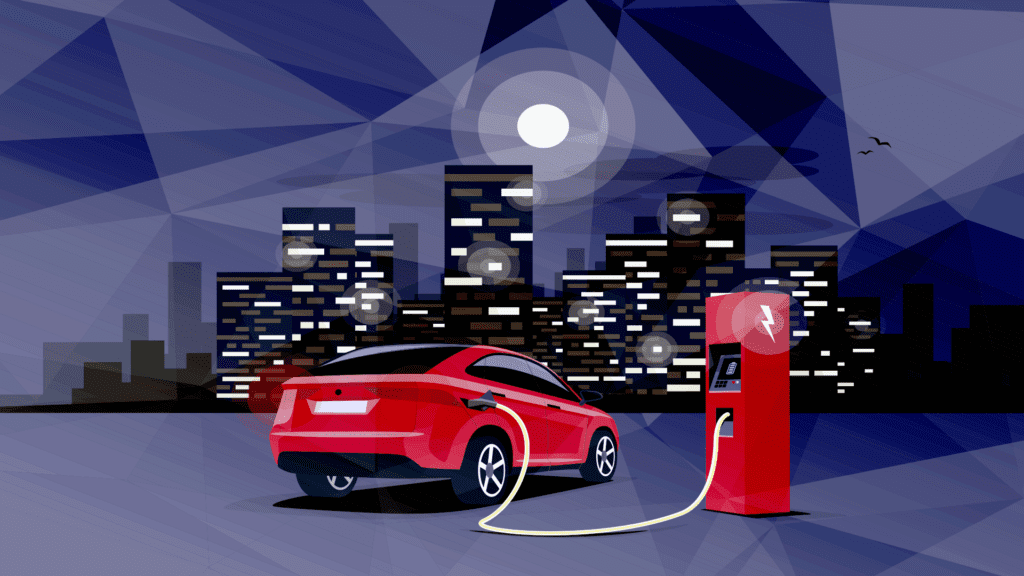How Electric Vehicles Impacting Minerals Industry

The rapid growth of the electric vehicle (EV) market has put significant pressure on the mining industry, as the primary raw materials used in EV batteries—cobalt, lithium, and nickel—are in high demand. As a result, prices have skyrocketed, and new refining processes have emerged, and according to Dr. Jose Luis Chavez Calva, an expert in energy, the most challenging factor is not the physical availability but the complex refining process to acquire this mineral in its useful form.
Cobalt, lithium, and nickel are found in many parts of the world. The Democratic Republic of Congo (DRC) accounts for over 60% of the world’s cobalt production, while lithium is primarily mined in Australia, Chile, and Argentina. Nickel reserves are mainly found in Indonesia, the Philippines, and Russia. The uneven distribution of these resources leads to geopolitical challenges. For example, the cobalt mining industry in the DRC is marred by human rights abuses and child labor. In South America, lithium mining has caused environmental concerns, with water scarcity being a major issue. Similarly, Indonesia’s nickel mining industry faces environmental challenges and frequent policy changes, which impact the global supply chain.
The surge in EV demand significantly contributes to the rising prices of cobalt, lithium, and nickel. As more countries implement ambitious climate policies and transition to clean energy, the demand for EVs will continue to increase, leading to an even greater need for these minerals and further escalating their prices.
Refining Process: The Real Challenge
According to Dr. Jose, although these minerals are not rare, their refining processes are complex, costly, and energy-intensive. For example, the most common method of refining lithium from brine requires several months and substantial amounts of water. This has led to the development of new extraction methods, such as direct lithium extraction, which uses membranes or absorbent materials to extract lithium from brines more efficiently.
Cobalt Refining
Cobalt is typically extracted as a byproduct of copper and nickel mining. The refining process involves several steps, including leaching, precipitation, and electrolysis. One of the main challenges in cobalt refining is managing hazardous impurities like arsenic, which can pose environmental and health risks if not properly addressed. This requires sophisticated processing facilities, strict regulations, and appropriate waste management practices.
Lithium Refining
Lithium is predominantly extracted from brine deposits or hard rock minerals like spodumene. Each extraction method comes with its own set of challenges:
- Brine extraction: This process involves pumping brine to the surface, where it undergoes a series of evaporation ponds. This can take several months and requires a large amount of water, which can lead to water scarcity issues in regions where lithium is found. Additionally, the evaporation process is sensitive to weather conditions, such as precipitation and temperature, which can impact the overall efficiency of lithium recovery.
- Hard rock extraction: Lithium extraction from spodumene involves mining the ore, followed by energy-intensive processes like crushing, grinding, and flotation. These processes are costly, have a high environmental impact, and require significant investment in infrastructure and expertise.
Nickel Refining
Nickel is commonly extracted from laterite and sulfide ores, both of which present unique challenges:
- Laterite ores: Processing laterite ores involves high-pressure acid leaching (HPAL) or pyrometallurgical processes. HPAL is energy-intensive and has a large environmental footprint, while pyrometallurgical processing involves smelting and refining at high temperatures, emitting significant amounts of greenhouse gases and other pollutants.
- eling, and refining, which are also energy-intensive and generate considerable amounts of waste. The complexities and environmental challenges of these refining processes, combined with the need for substantial investments in infrastructure and technical expertise, make it difficult for many countries to establish their own extraction facilities. Consequently, the extraction of cobalt, lithium, and nickel remains concentrated in a few regions worldwide.
New Developments in Refining
To meet the growing demand for these minerals, new refining facilities have been established across the world. Countries like the United States, Canada, and European nations are investing in domestic refining capabilities to reduce dependency on foreign supplies. Additionally, new technologies are being developed to improve the efficiency and sustainability of the refining process. Alternatives in the Battery Industry According to Dr. Jose Luis Chavez Calva, as the demand for cobalt, lithium, and nickel continues to rise, research into alternative materials for EV batteries has intensified. Some promising alternatives include:
- Solid-state batteries: These batteries use solid electrolytes instead of liquid ones, reducing the need for cobalt and providing better energy density and safety. Sodium-ion batteries: Sodium is abundant and less expensive than lithium, making it an attractive alternative. However, challenges remain in terms of energy density and cycle life. Aluminum-ion batteries: These batteries offer high energy density, fast charging times, and long cycle life, but they are still in the early stages of development.Sulfide ores: Refining sulfide ores involves flotation, smell
The rising demand for cobalt, lithium, and nickel due to the growth of the EV market presents numerous challenges and opportunities. As the world transitions to cleaner energy, addressing geopolitical issues, refining processes, and exploring alternative materials will be crucial to ensure a sustainable and reliable supply chain for the battery industry. By focusing on these aspects, we can create a more resilient and environmentally responsible future for electric vehicles and the raw materials that power them. Source: https://joseluischavezcalva.substack.com/p/the-rising-demand-for-minerals-challenges
Research Snipers is currently covering all technology news including Google, Apple, Android, Xiaomi, Huawei, Samsung News, and More. Research Snipers has decade of experience in breaking technology news, covering latest trends in tech news, and recent developments.










